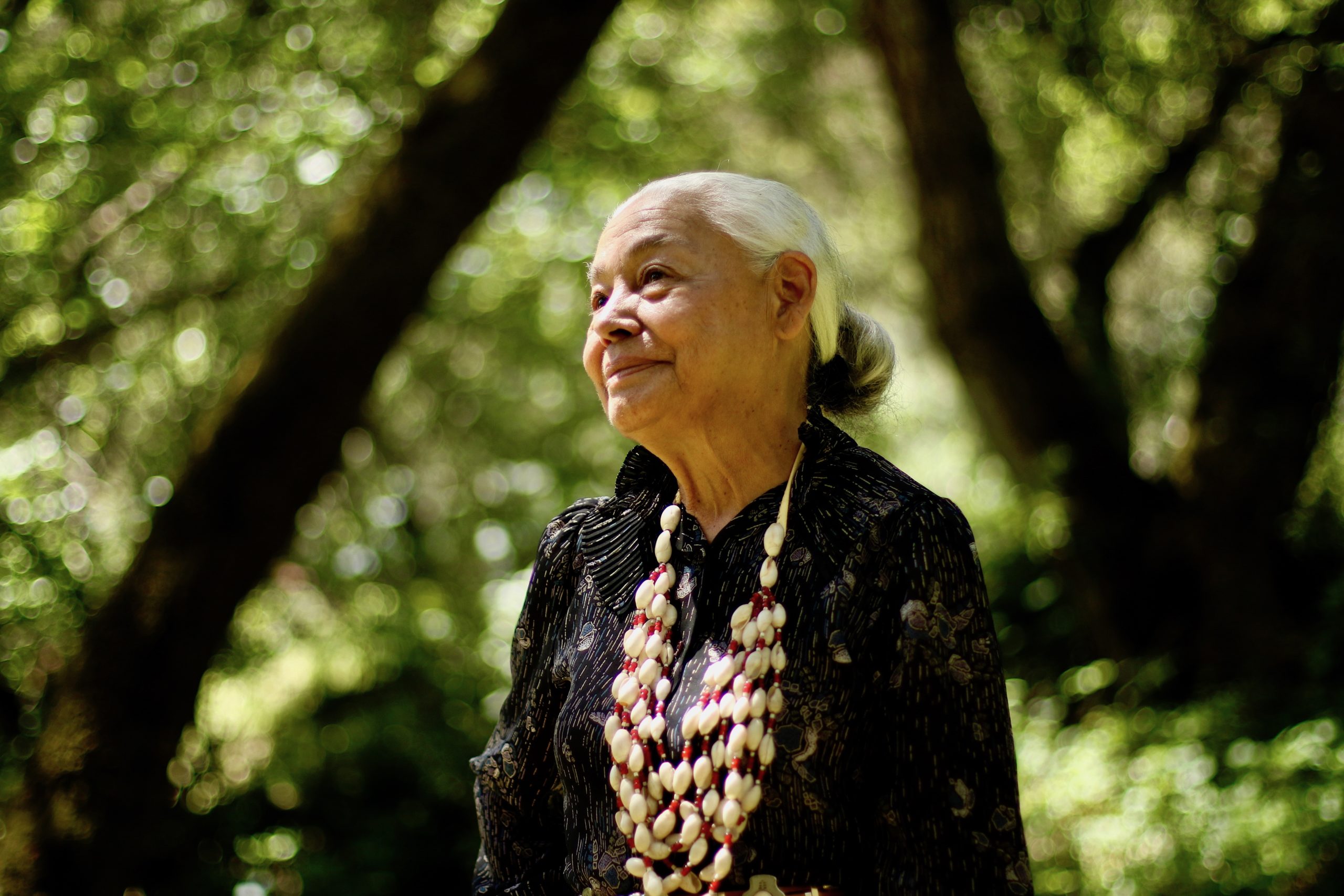The San Francisco Foundation’s Rapid Response Fund has become a powerful resource to help tell the stories of people who are fighting for justice in communities across the region. Thanks to a Rapid Response Fund grant to filmmaker Rucha Chitnis, many more people will now get to learn from Ann Marie Sayers, who has been telling the story of the Native American experience for decades.
When Sayers was in elementary school, she barely learned anything about indigenous people like her in school. “There was all but maybe two paragraphs on the California Indians. That was it. And one of the sentences said that they were lazy!”
That moment sparked a desire in Sayers, 71, to preserve the legacy of her indigenous ancestors and to advocate for truth in history. During the Gold Rush era, for a period of 20 years beginning in 1848, an estimated 80 percent of California’s indigenous population was wiped out through murder and disease.
Sayers, who is Ohlone, was born and raised in Indian Canyon, near Hollister, California on her great grandfather’s trust allotment – a piece of land granted to an individual Native American – which had been established in 1911. In 1980, Sayers, the tribal chair of Indian Canyon, used the Indian Allotment Act of 1887 to reclaim adjacent public domain land, an effort that took eight years. Today, Indian Canyon consists of about 1,000 acres and is the only federally recognized Indian territory from Sonoma to the coast of Santa Barbara, a distance of more than 300 miles.
Indian Canyon is available to all indigenous people to use for performing traditional ceremonies — something that was prohibited until the 1978 passage of the American Indian Religious Freedom Act. In welcoming other indigenous people to Indian Canyon, Sayers continues the land’s long history as a refuge. Nestled in the Gavilan mountain range, the secluded canyon served as a safe haven for indigenous people escaping the Spanish Missions in the 1700s and 1800s.
Now, Sayer’s story is the subject of a short documentary, In the Land of My Ancestors, produced by photojournalist Rucha Chitnis. Chitnis, whose body of work focuses on women of color, first saw Sayers speak at an event in 2015. That was during California’s drought, and Chitnis remembers the area surrounding the canyon as dry, consisting of industrial agriculture and monocultures. “And then you slowly enter Indian Canyon and the biodiversity comes alive,” Chitnis says. “You’re not only entering into a different world, but a different world view.”
The canyon is a mile long, lush with canopies of trees, streams, and a cascading waterfall. More than 30 gathering areas and nine sweat lodges are available for ceremonies.
Chitnis returned to Indian Canyon in May 2018 with cinematographer Jason Taylor for eight days of filming. That fall, she applied for a Rapid Response Grant to help fund screenings of the film. “It’s critical that we amplify a narrative of truth in history, which is Ann Marie’s powerful living legacy,” she says.
The nine-minute film premiered in November 2018 at a sold-out 200-person event at the David Brower Center, an environmental center in Berkeley. It happened to take place in the midst of the most destructive wildfire season ever recorded in California.
“It was such good medicine because everyone was so despondent with the fires and not being able to see our skies and what’s happening to the earth,” Chitnis says. “And then [we were grounded] in indigenous ecological knowledge — knowledge around managing and stewarding our lands and waterways with care.”
Activism for indigenous rights goes hand in hand with environmental activism — from Standing Rock to the indigenous tribes of the Amazon. Sayers has advocated against fracking in California with other faith leaders.
“Non-native people can learn a lot from the native peoples that are still alive, that are still living on their lands, that are working with the environment in a manner that is respectful,” Sayers says in the film.
In the Land of my Ancestors has screened at 35 events and film festivals, been broadcast on KQED, and screened in schools throughout the Bay Area. Chitnis feels the story is particularly relevant in today’s hostile political environment. “I think it’s important to celebrate resiliency,” she says. “I’m not interested in the doom and gloom, or the Euro-centric perspective that erases the voices of so many. That’s not going to help us to shift behaviors. I think what we need is hope, and women like Ann Marie are creating a space for healing and are reclaiming what is rightfully theirs.”
While Sayers relays a history of brutality, displacement, and genocide against indigenous people in the film, her message is a hopeful one of survival and the reclamation of land and culture.
When asked what she hopes viewers will take away from the film, Sayers says simply, “Knowing that we’re still here.”
By Melissa Hung, foundation consultant


